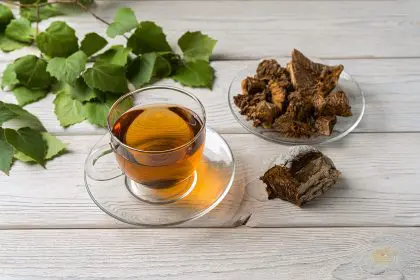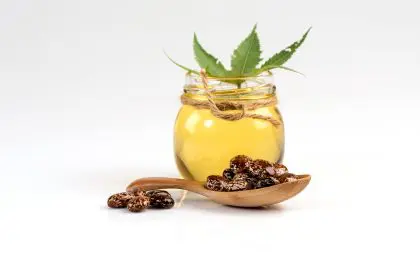The medicine cabinet of the future might look surprisingly similar to your grandmother’s spice rack. As people increasingly seek alternatives to conventional medications, natural antibiotics are experiencing a remarkable renaissance. These plant-based powerhouses have been healing humanity for thousands of years, and now modern science is validating what traditional healers have always known.
The shift toward natural antibiotics represents more than just a wellness trend. It reflects a growing desire among health-conscious individuals to find effective solutions that work with the body’s natural healing processes rather than against them. These ancient remedies offer compelling benefits that extend far beyond simple bacterial control, providing holistic healing that addresses multiple aspects of wellness simultaneously.
Unlike their synthetic counterparts, natural antibiotics often come with built-in safety mechanisms and additional therapeutic benefits. This multi-faceted approach to healing has captured the attention of both medical researchers and everyday people seeking gentler yet effective alternatives to conventional treatments.
Why people are choosing natural healing
The growing popularity of natural antibiotics stems from several compelling factors that resonate with modern health concerns. First, these remedies typically produce fewer adverse reactions than synthetic medications, allowing people to maintain their daily routines without worrying about disruptive side effects that could interfere with work or family responsibilities.
Cost considerations play a significant role in this natural health movement. Many people find prescription medications prohibitively expensive, especially those without comprehensive health insurance. Natural antibiotics can often be found in any grocery store for a fraction of the cost of prescription drugs, making effective healthcare more accessible to everyone.
The convenience factor cannot be overlooked in our fast-paced world. Having effective natural remedies readily available means people can address minor health issues without disrupting their schedules or dealing with the logistics of doctor visits and prescription refills. This accessibility appeals to busy individuals who appreciate practical solutions that fit seamlessly into their daily lives.
The science behind nature’s pharmacy
Modern research has validated what traditional healers have known for millennia: certain plants contain compounds that can effectively combat bacterial infections. These natural antibiotics work through various mechanisms, from disrupting bacterial cell walls to preventing harmful microorganisms from reproducing.
What makes these remedies particularly appealing is their dual-action approach. Many natural antibiotics don’t just fight infection; they also boost the immune system, reduce inflammation, and provide additional health benefits that synthetic drugs cannot match. This holistic approach aligns with wellness philosophies that view health as encompassing the whole person rather than just treating isolated symptoms.
The growing body of scientific literature supporting these traditional remedies has given people the confidence to incorporate them into their health routines. Peer-reviewed studies have demonstrated the effectiveness of various plant compounds against common bacterial strains, providing the evidence-based foundation that health-conscious individuals demand.
8 natural antibiotics changing modern healing
1. Garlic’s remarkable healing power
Garlic has earned its reputation as nature’s most potent antibiotic through its high concentration of allicin, a sulfur compound that demonstrates remarkable antibacterial properties. This kitchen staple has shown effectiveness against dangerous bacteria including E. coli and Staphylococcus aureus in laboratory studies.
People appreciate garlic’s versatility, as it can be consumed raw for maximum potency, incorporated into meals, or even applied topically for wound care. The compound allicin is most active when garlic is crushed or chopped, releasing its therapeutic properties within minutes of preparation.
2. Turmeric’s golden healing properties
The vibrant golden spice that colors many wellness drinks contains curcumin, a powerful compound with demonstrated antimicrobial effects. While curcumin’s limited bioavailability once posed challenges, innovative formulations now maximize its therapeutic potential.
Many people use turmeric both internally and externally, applying it to minor cuts and scrapes to promote healing while reducing inflammation. The spice’s anti-inflammatory properties provide additional benefits that appeal to individuals dealing with chronic pain or inflammatory conditions.
3. Neem’s ancient wisdom
This revered plant from traditional Ayurvedic medicine has found favor among people seeking natural solutions for skin concerns. Neem’s antibacterial compounds effectively target bacteria like Salmonella and Staphylococcus, making it valuable for addressing various skin infections.
Skincare professionals often recommend diluted neem oil for clients dealing with minor skin issues. The plant’s gentle yet effective action makes it suitable for sensitive skin that requires careful attention and natural treatment approaches.
4. Ginger’s warming protection
Beyond its well-known digestive benefits, ginger contains gingerol, a compound with significant antimicrobial properties. This warming root has become a staple in wellness routines, particularly for addressing respiratory concerns that could affect daily comfort and productivity.
The versatility of ginger appeals to busy individuals who can consume it as tea, incorporate it into smoothies, or use it in cooking. Its natural warming properties also make it popular among people who frequently experience cold symptoms or seasonal respiratory challenges.
5. Honey’s sweet medicine
Raw honey, particularly the coveted Manuka variety from New Zealand, has captured the attention of people seeking natural healing solutions. This golden elixir demonstrates potent antibacterial effects that rival many conventional treatments.
Many people keep high-quality honey readily available for addressing throat concerns or minor wounds. The natural enzymes in raw honey provide gentle yet effective healing properties that don’t interfere with daily activities or cause unwanted side effects.
6. Goldenseal’s potent compounds
This North American herb contains berberine, a yellow compound with impressive antimicrobial properties. Goldenseal has gained popularity among people for addressing gastrointestinal concerns that could otherwise disrupt daily routines and overall well-being.
The herb’s effectiveness against various bacterial strains makes it valuable for individuals who frequently travel and encounter different environmental challenges. However, people working with knowledgeable herbalists understand the importance of proper dosing and timing for optimal results.
7. Echinacea’s immune support
Long valued by indigenous cultures, echinacea has become a go-to remedy for people seeking to maintain their health during challenging seasons. This purple flower supports the immune system’s natural ability to fight infections before they become problematic.
The preventive approach appeals to individuals who cannot afford to fall ill during important personal or professional periods. Echinacea’s gentle yet effective action makes it suitable for regular use as part of a comprehensive wellness routine.
8. Thyme’s aromatic healing
This Mediterranean herb contains thymol, a compound with demonstrated effectiveness against harmful bacteria. Thyme oil has found applications in wellness routines, particularly for oral health and respiratory support.
The herb’s pleasant aroma and mild flavor make it easy to incorporate into daily routines. Many people use thyme-based mouthwashes or add the herb to their cooking for both culinary and therapeutic benefits.
Safe practices for natural healing
People working with natural antibiotics understand the importance of proper guidance and quality sourcing. Leading health practitioners recommend consulting with integrative medicine professionals who can provide personalized advice based on individual health profiles and specific needs.
Quality sourcing has become paramount in natural wellness circles, with people seeking organic, sustainably harvested products from reputable suppliers. This attention to quality ensures maximum therapeutic benefit while minimizing the risk of contamination or adulteration.
The patch test approach has become standard practice among people using topical natural antibiotics. This simple precaution helps identify potential sensitivities before applying treatments to larger areas, protecting skin health and preventing adverse reactions.
The future of natural wellness
As more people embrace natural antibiotics, their influence extends beyond individual health choices to mainstream wellness culture. Social media platforms showcase individuals incorporating these remedies into their daily routines, inspiring others to explore natural alternatives for their own health needs.
The widespread adoption of natural antibiotics reflects a broader shift toward holistic wellness approaches that prioritize prevention and gentle healing methods. This trend shows no signs of slowing, as more people discover the benefits of working with nature rather than against it.
The integration of traditional wisdom with modern lifestyle demands has created a new paradigm in personal health management. These natural antibiotics offer effective solutions that align with the values and practical needs of today’s health-conscious individuals, ensuring their continued popularity in wellness communities worldwide.


















